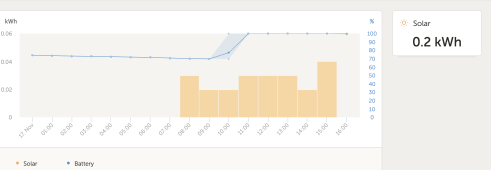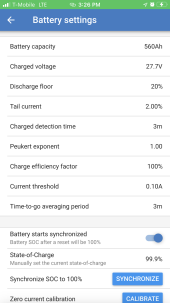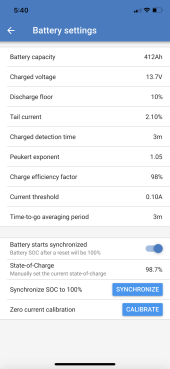ezwryder
New Member
I’m trying to understand if I have a problem or if my system is operating as expected. In brief, I have two SOK 206 AH heated batteries in parallel charged by a Victron 100/30 solar charge controller. The system is installed in a remote cabin where temps this week have fallen below 32 F.
Today I noticed that the charging process was cut short. This morning the charge level was at 70%. On a normal sunny day it would take about 6 hours of full sun to generate the 125 AH needed to get them to 100%. However, it’s cloudy and the panels couldn’t have been putting out more than a few AH. After 2.5 hours the pack voltage went to the cutoff at 14.6 and the charger dropped into absorption then float mode.
I did not have a way to test the heaters when I put the system together, but IF they were working, I would not have expected the charge cycle to end prematurely. If the BMSes put the batteries in protect mode, would that fit what I’ve described?
I’m 1,000 miles away from the system so the only info I have is what I get from my Victron components. I can make changes to the solar charge controller if that seems warranted, but I am unsure what else I can do.
I would appreciate any thoughts/opinions on what might be happening. Thank you.
Today I noticed that the charging process was cut short. This morning the charge level was at 70%. On a normal sunny day it would take about 6 hours of full sun to generate the 125 AH needed to get them to 100%. However, it’s cloudy and the panels couldn’t have been putting out more than a few AH. After 2.5 hours the pack voltage went to the cutoff at 14.6 and the charger dropped into absorption then float mode.
I did not have a way to test the heaters when I put the system together, but IF they were working, I would not have expected the charge cycle to end prematurely. If the BMSes put the batteries in protect mode, would that fit what I’ve described?
I’m 1,000 miles away from the system so the only info I have is what I get from my Victron components. I can make changes to the solar charge controller if that seems warranted, but I am unsure what else I can do.
I would appreciate any thoughts/opinions on what might be happening. Thank you.





